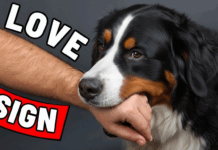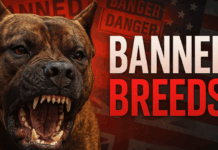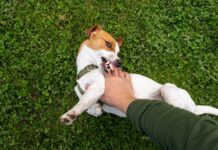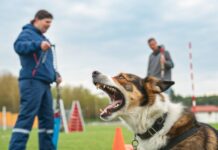Last Updated on July 29, 2024 by Dogs Vets
How to Reduce Dog Anxiety: Effective Ways
Introduction
Just like humans, dogs can experience anxiety too. It’s crucial for dog owners to recognize the signs of anxiety and take proactive steps to alleviate their furry friend’s distress.
Reducing dog anxiety not only promotes their well-being but also strengthens the bond between pet and owner.
In this article, we will explore various strategies and techniques to help soothe your anxious dog, creating a harmonious and stress-free environment for both of you.
Understanding Dog Anxiety
Before diving into solutions, it’s important to grasp the root causes of dog anxiety.
Common triggers include separation from their owners, loud noises (such as fireworks or thunderstorms), unfamiliar environments, traumatic experiences, changes in routine, and even underlying health issues.
Anxiety can manifest in various ways, such as excessive barking, destructive behavior, restlessness, trembling, panting, or attempting to escape. Recognizing these signs will enable you to take appropriate action to provide comfort and support.
Creating a Calming Environment
- Safe Haven: Designate a quiet, cozy space where your dog can retreat to when feeling anxious. Fill it with familiar items like their bed, toys, and a soft blanket. This space should serve as a sanctuary where they can feel secure.
- Background Noise: Soothing sounds, like gentle music or white noise, can help drown out external disturbances that may trigger anxiety. Consider leaving a TV or radio on at low volume to provide comforting background noise.
- Aromatherapy: Certain scents, such as lavender or chamomile, have calming effects on dogs. Use essential oil diffusers or sprays in the designated safe haven to create a serene atmosphere. Remember to consult a veterinarian before introducing aromatherapy to ensure your dog’s safety.
- Consistent Routine: Dogs thrive on predictability. Establish a regular schedule for meals, exercise, playtime, and rest. Consistency provides a sense of security and stability, reducing anxiety.
- Physical Exercise: Regular exercise is essential for a dog’s overall well-being. It helps release pent-up energy, reduces stress, and promotes relaxation. Engage your dog in activities like walks, runs, playtime, or interactive toys to keep them physically and mentally stimulated.
Majority of dogs have anxiety, study finds https://t.co/vE9xhxiy1G
— The Independent (@Independent) March 12, 2020
10 Effective Strategies to Reduce Dog Anxiety
1. Establish a Consistent Routine
Dogs thrive on predictability. Creating a consistent schedule for feeding, walks, playtime, and rest can help your dog feel more secure. When dogs know what to expect, it can significantly reduce their anxiety levels.
2. Provide Mental Stimulation
Keeping your dog mentally engaged is crucial. Incorporate puzzle toys, training sessions, and interactive games into their daily routine. Activities that challenge their mind can distract them from anxiety-inducing situations and help them build confidence.
3. Use Calming Products
Consider utilizing calming products such as pheromone diffusers, sprays, or collars. These products release synthetic pheromones that can help soothe anxious dogs. Additionally, natural supplements containing ingredients like melatonin or chamomile may provide relief.
4. Create a Safe Space
Designate a quiet area in your home where your dog can retreat when feeling anxious. This space should be comfortable and familiar, equipped with their favorite toys and blankets. A crate can also serve as a safe haven if your dog is crate-trained.
5. Engage in Regular Exercise
Physical activity is essential for reducing anxiety in dogs. Regular walks, play sessions, and interactive games help release pent-up energy and promote overall well-being. Exercise also releases endorphins, which can improve your dog’s mood.
6. Practice Desensitization Techniques
Desensitization involves gradually exposing your dog to anxiety triggers in a controlled manner. Start with low-intensity exposure and gradually increase it while rewarding calm behavior. This technique can help your dog learn to cope with their fears over time.
7. Use Calming Music or White Noise
Playing calming music or white noise can create a soothing environment for your dog. This can be especially helpful during stressful situations, such as thunderstorms or fireworks, by drowning out loud noises that may trigger anxiety.
8. Consider Professional Help
If your dog’s anxiety persists despite your efforts, consider consulting a veterinarian or a professional dog trainer. They can provide tailored advice and may recommend behavioral therapy or medication if necessary.
9. Socialization
Gradually exposing your dog to new environments, people, and other dogs can help them build confidence and reduce anxiety. Controlled socialization experiences can make your dog feel more comfortable in various situations.
10. Positive Reinforcement Training
Use positive reinforcement techniques to encourage desired behaviors. Reward your dog for calm behavior during potentially anxiety-inducing situations, reinforcing their ability to cope.
Training Techniques for Anxiety
- Counterconditioning: This technique involves associating anxiety-inducing situations with positive experiences. Gradually expose your dog to triggers in a controlled environment while rewarding them with treats, praise, and affection. This helps them develop positive associations and reduces anxiety over time.
- Desensitization: Slowly introduce your dog to anxiety triggers in a gradual and systematic manner. For instance, if your dog is afraid of car rides, start by having them sit in the stationary car, then progress to short drives, rewarding calm behavior throughout. The aim is to desensitize your dog to the trigger by gradually increasing exposure while maintaining a relaxed state.
- Thundershirt: Thundershirts are snug-fitting garments that apply gentle, constant pressure to your dog’s body, simulating the sensation of a comforting hug. This pressure has a calming effect and can help reduce anxiety during stressful situations.
- Calming Supplements: Natural supplements, such as chamomile or valerian root, can provide relaxation and help ease anxiety in dogs. However, always consult your veterinarian before introducing any supplements into your dog’s routine to ensure they are safe and appropriate.
- Professional Help: In severe cases, seeking professional help from a certified dog behaviorist or trainer is advisable. They can assess your dog’s anxiety triggers and develop a customized training plan to address their specific needs.
Owner’s Role and Support
- Remain Calm: Dogs can pick up on their owner’s emotions, so it’s important to stay calm and composed during anxiety-inducing situations. Your reassuring presence will help comfort and stabilize your dog.
- Positive Reinforcement: Reward your dog’s calm behavior and small victories with treats, praise, and affection. Positive reinforcement reinforces their confidence and helps them associate calmness with positive experiences.
- Interactive Toys: Engage your dog’s mind with puzzle toys or treat-dispensing toys. These toys provide mental stimulation and distract them from anxiety triggers. They also encourage problem-solving and promote a sense of accomplishment.
- Avoid Punishment: Punishment can exacerbate anxiety and create a negative association with anxiety triggers. Instead, focus on positive reinforcement and redirection techniques to encourage desired behaviors.
- Seek Support: Connect with other dog owners or join online communities to share experiences and seek advice. Sharing insights and seeking support from like-minded individuals can be invaluable in managing your dog’s anxiety.
Conclusion
Reducing dog anxiety requires patience, understanding, and a tailored approach.
By creating a calming environment, implementing training techniques, and providing support as a loving owner, you can significantly alleviate your dog’s anxiety and improve their overall well-being.
Remember, each dog is unique, so be prepared to adjust your strategies as needed. With time and dedication, you can help your anxious dog lead a happier, more relaxed life.
By implementing these strategies, you can help your dog manage anxiety effectively, leading to a happier and more relaxed pet. Remember that patience and consistency are key in this process, and always prioritize your dog’s well-being.
DoggieHerbs, an online shop for dog Herbal Remedies and Supplements. All rights reserved. This material may not be published, broadcast, rewritten or redistributed.
Fact Check
We hope you enjoyed reading this article. What are your thoughts on the topic?
“At [Dogsvets.com], our goal is to bring you the most accurate and up-to-date information on all things pet-related.
If you have any additional insights or would like to advertise with us, don’t hesitate to get in touch.
If you notice any errors or discrepancies in our content, please let us know so we can correct them.
We welcome your feedback and encourage you to share this article with others.”

















